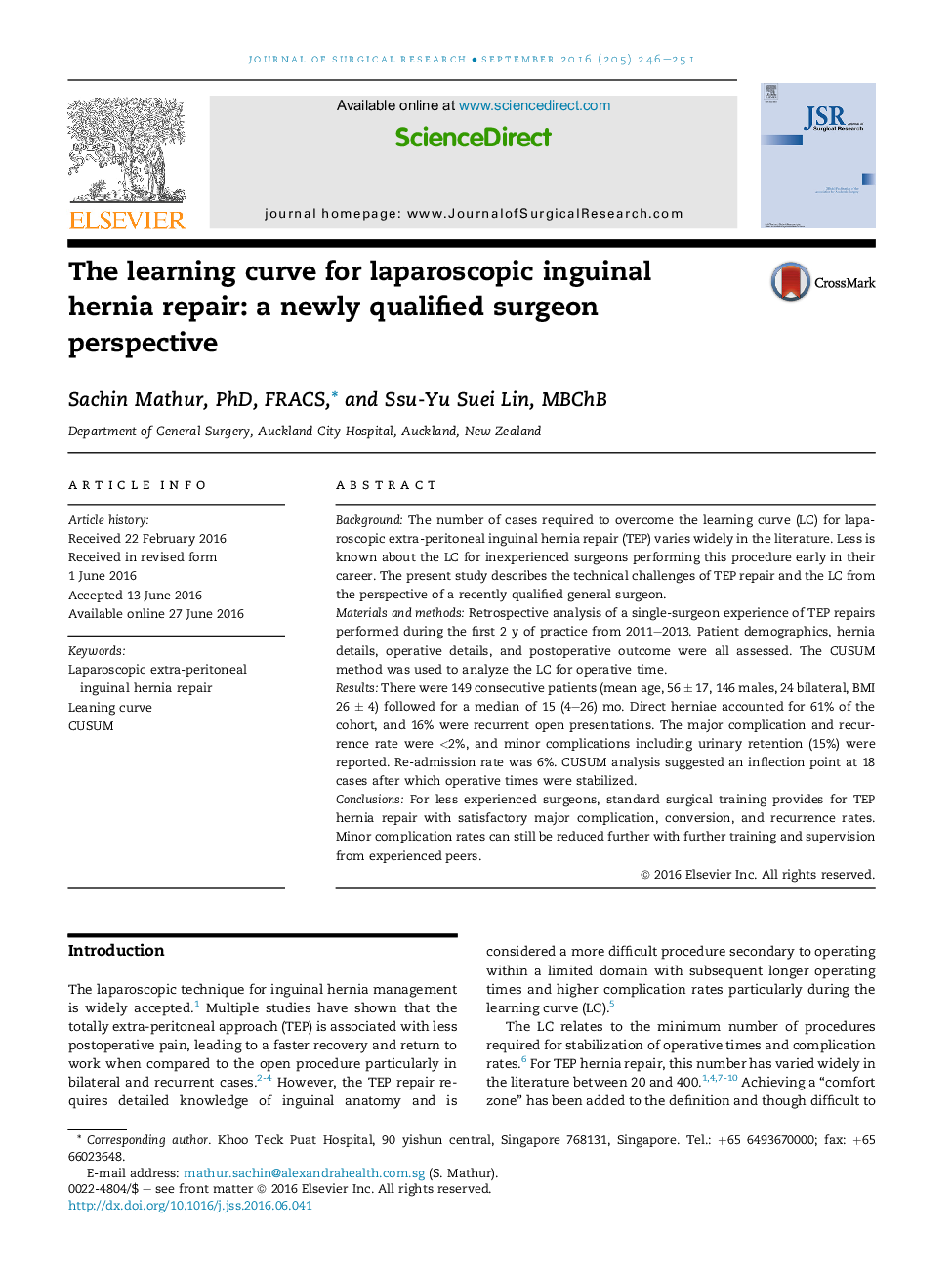| کد مقاله | کد نشریه | سال انتشار | مقاله انگلیسی | نسخه تمام متن |
|---|---|---|---|---|
| 4299319 | 1288388 | 2016 | 6 صفحه PDF | دانلود رایگان |
BackgroundThe number of cases required to overcome the learning curve (LC) for laparoscopic extra-peritoneal inguinal hernia repair (TEP) varies widely in the literature. Less is known about the LC for inexperienced surgeons performing this procedure early in their career. The present study describes the technical challenges of TEP repair and the LC from the perspective of a recently qualified general surgeon.Materials and methodsRetrospective analysis of a single-surgeon experience of TEP repairs performed during the first 2 y of practice from 2011–2013. Patient demographics, hernia details, operative details, and postoperative outcome were all assessed. The CUSUM method was used to analyze the LC for operative time.ResultsThere were 149 consecutive patients (mean age, 56 ± 17, 146 males, 24 bilateral, BMI 26 ± 4) followed for a median of 15 (4–26) mo. Direct herniae accounted for 61% of the cohort, and 16% were recurrent open presentations. The major complication and recurrence rate were <2%, and minor complications including urinary retention (15%) were reported. Re-admission rate was 6%. CUSUM analysis suggested an inflection point at 18 cases after which operative times were stabilized.ConclusionsFor less experienced surgeons, standard surgical training provides for TEP hernia repair with satisfactory major complication, conversion, and recurrence rates. Minor complication rates can still be reduced further with further training and supervision from experienced peers.
Journal: Journal of Surgical Research - Volume 205, Issue 1, September 2016, Pages 246–251
